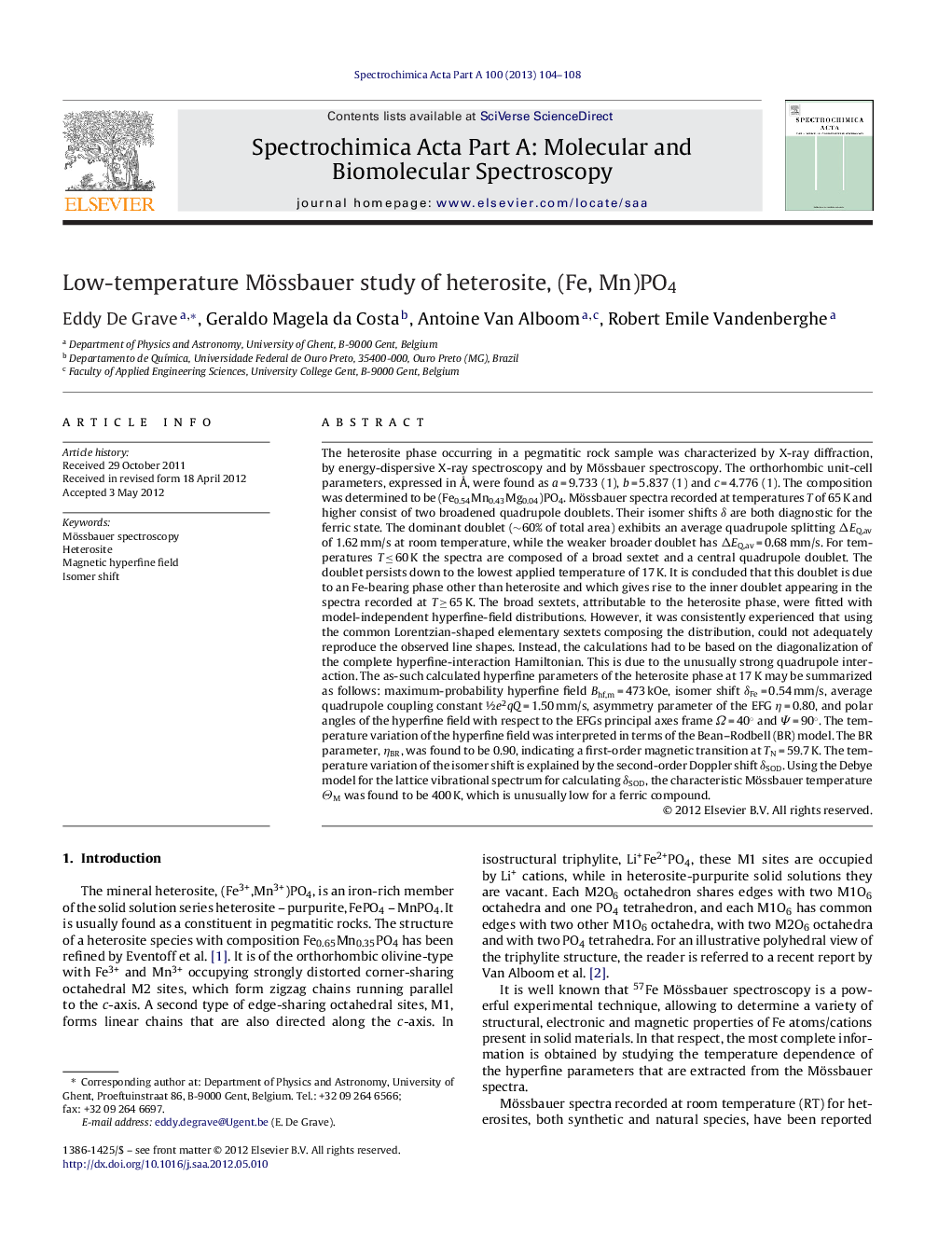| کد مقاله | کد نشریه | سال انتشار | مقاله انگلیسی | نسخه تمام متن |
|---|---|---|---|---|
| 1230943 | 1495268 | 2013 | 5 صفحه PDF | دانلود رایگان |

The heterosite phase occurring in a pegmatitic rock sample was characterized by X-ray diffraction, by energy-dispersive X-ray spectroscopy and by Mössbauer spectroscopy. The orthorhombic unit-cell parameters, expressed in Å, were found as a = 9.733 (1), b = 5.837 (1) and c = 4.776 (1). The composition was determined to be (Fe0.54Mn0.43Mg0.04)PO4. Mössbauer spectra recorded at temperatures T of 65 K and higher consist of two broadened quadrupole doublets. Their isomer shifts δ are both diagnostic for the ferric state. The dominant doublet (∼60% of total area) exhibits an average quadrupole splitting ΔEQ,av of 1.62 mm/s at room temperature, while the weaker broader doublet has ΔEQ,av = 0.68 mm/s. For temperatures T ≤ 60 K the spectra are composed of a broad sextet and a central quadrupole doublet. The doublet persists down to the lowest applied temperature of 17 K. It is concluded that this doublet is due to an Fe-bearing phase other than heterosite and which gives rise to the inner doublet appearing in the spectra recorded at T ≥ 65 K. The broad sextets, attributable to the heterosite phase, were fitted with model-independent hyperfine-field distributions. However, it was consistently experienced that using the common Lorentzian-shaped elementary sextets composing the distribution, could not adequately reproduce the observed line shapes. Instead, the calculations had to be based on the diagonalization of the complete hyperfine-interaction Hamiltonian. This is due to the unusually strong quadrupole interaction. The as-such calculated hyperfine parameters of the heterosite phase at 17 K may be summarized as follows: maximum-probability hyperfine field Bhf,m = 473 kOe, isomer shift δFe = 0.54 mm/s, average quadrupole coupling constant ½e2qQ = 1.50 mm/s, asymmetry parameter of the EFG η = 0.80, and polar angles of the hyperfine field with respect to the EFGs principal axes frame Ω = 40° and Ψ = 90°. The temperature variation of the hyperfine field was interpreted in terms of the Bean–Rodbell (BR) model. The BR parameter, ηBR, was found to be 0.90, indicating a first-order magnetic transition at TN = 59.7 K. The temperature variation of the isomer shift is explained by the second-order Doppler shift δSOD. Using the Debye model for the lattice vibrational spectrum for calculating δSOD, the characteristic Mössbauer temperature ΘM was found to be 400 K, which is unusually low for a ferric compound.
Figure optionsDownload as PowerPoint slideHighlights
► Mineral Mössbauer spectroscopy.
► Model-independent magnetic hyperfine-field distributions.
► Complete hyperfine-interaction Hamiltonian for calculating elementary sextets.
► Bean–Rodbell model for the temperature variation of the magnetic hyperfine field.
► Debye model for the temperature variation of the isomer shift.
Journal: Spectrochimica Acta Part A: Molecular and Biomolecular Spectroscopy - Volume 100, 1 January 2013, Pages 104–108